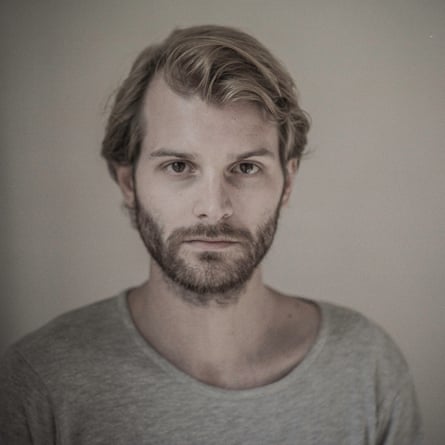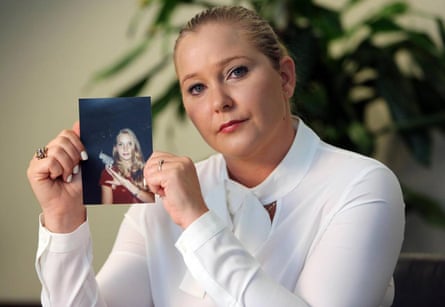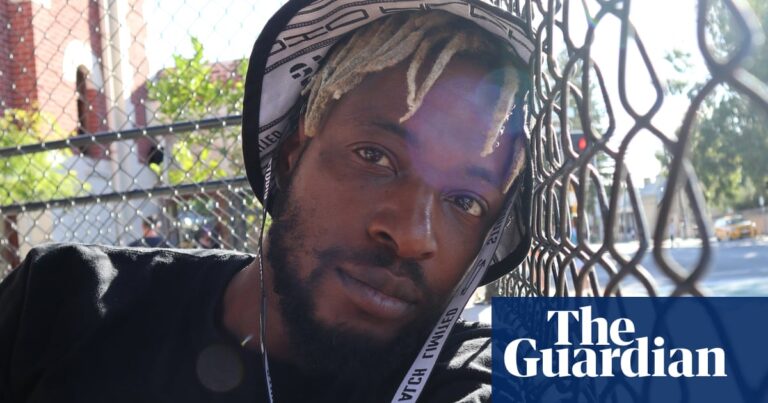The citizens of Denmark enjoy a reputation for living an exceptionally stress-free existence. This is in large part due to the small Scandinavian state’s unusually simple system for accessing government services. Every Dane or Danish resident has a CPR (Central Person Register) number made up of their date of birth and four extra digits that is used for anything from banking to tax returns, healthcare and borrowing library books.
It’s a boon of convenience with a grim backstory: Danish welfare services are so streamlined because since 1924 councils have been forced by law to keep population registers, a measure that was catalysed by one of the most gruesome serial murders in the country’s history. Three years earlier, 33-year-old Dagmar Overbye was found to have killed nine infants in her care (and was suspected of murdering 17 more), most of them foster children whose disappearance had not shown up in the national records.
Magnus von Horn’s film The Girl With the Needle, which is based on the horrific deeds of the woman who was later called “the Angel Maker”, has been put forward as Denmark’s entry for this year’s Oscars. But it is doubtful the national tourism board had much of a say in the nomination process, because if there is one thing that Von Horn’s film isn’t, it’s hygge.
“‘Oh, it’s about a woman who killed infants,’” is how the Swedish director recalls the idea being pitched to him by Danish producers. The story of Overbye, who strangled, drowned and burned to death unwanted children she pretended to have taken in for care, initially terrified him, not least because his second child had only recently been born. “I don’t know what I would do if something happened to my children. I can spin myself into a black hole of despair just thinking about it.”
He was uneasy about feeding viewers’ never-ending appetite for serial killer biopics, his conscience telling him there was something “a bit morally questionable” about the boom in true-crime podcasts and the success of Netflix’s Jeffrey Dahmer serial, Monster. The film-maker agreed only because he wanted to try his hand at genre cinema. “I felt that kind of fear is a good fuel for horror, and I knew I wanted to try to make a horror film.”
The Girl With the Needle is shot in stunning, painstakingly staged black-and-white that nods to that expressionist classic of infanticide, Fritz Lang’s M, but its mood board is very much one of odorous browns and gangrenous yellows. Young factory worker Karoline (Vic Carmen Sonne) inhabits a post-first world war Copenhagen where bedsheets are filthy and roofs are leaky, where people urinate in rusty buckets and live off unidentifiable watery slop.
With her husband believed to have died in the war, an affair with her textile factory’s handsome bourgeois owner, Jørgen, promises to lift her out of her misery, but his materfamilias calls off their marriage and Karoline decides that she cannot raise the child she carries inside her – which is where the grotesquely oversized sewing instrument of the title comes in.
When the abortion fails and a child is born, charismatic Dagmar (Trine Dyrholm) comes to the rescue, offering to find the baby caring and well-off parents via her underground adoption agency and giving Karoline work as a wet-nurse. But after her husband, Peter, (Besir Zeciri) returns from the war heavily disfigured but very much alive, her feelings begin to change.
Peter initially wears a mask to cover his injuries, but the scene in which Karoline exposes his shell-shattered jaw is when Von Horn’s film flips from period drama into full-on body horror. At Cannes, where The Girl With the Needle premiered last summer, the feature slotted in among an inordinate number of films where protagonists were losing body parts left and right, from Demi Moore’s melting face in Coralie Fargeat’s The Substance, via Anya Taylor-Joy cutting off her arm in Furiosa: A Mad Max Saga, to Emma Stone serving up her own chopped-off finger to her husband in Yorgos Lanthimos’ Kinds of Kindness.
European arthouse cinema has never been known for its squeamishness, but in many of these films bodily mutilation was more than just a shock effect: rather, it is only through damage to the physical exterior that we come to see the characters’ authentic selves inside (Cannes jury prize winner Emilia Pérez, Jacques Audiard’s musical about gender-reassignment surgery being the most optimistic film in that regard).
When I ask Von Horn in a video call why the cinematic hive mind is now so enamoured of gruesome injuries, he whips out two pieces of paper from underneath his desk as if on cue, one with a sketch of Peter’s broken visage he drew during pre-production, one of the crumpled face of a newborn. “Peter’s face is deformed by war, but when a child has just been born, it’s also deformed,” he says. In the second half of the film, as Karoline grows into her new role as a wet-nurse, her disgust at her disfigured husband turns to tenderness. “When she holds a new baby in her arms, it reminds her of Peter,” he says.
It’s a mindset that feels oddly modern: horror is where alliances are built, rather than where divisions are made. “In the best horror films I know, like the films of Kiyoshi Kurosawa, character is more important than the shape of the genre,” says Von Horn. “They’re romantic.”
The cautious use of shock effect puts Von Horn at odds with Scandinavia’s most influential cinematic export of the modern era. Lars von Trier, whose most recent film was another serial killer movie, 2018’s The House that Jack Built, reinvented cinema into a bloodthirsty theatre of cruelty, where female protagonists are forced to suffer trials of abominable unkindness.
By comparison, Von Horn’s cinema is a festival of empathy. “My films are cruel in the sense that the world is cruel and full of violence,” he says. “But to me, [film] is always about love. At the heart there is always a yearning for affection, closeness or acceptance.” Even in Copenhagen’s filthiest and most poverty-stricken backstreets, Karoline discovers tenderness. The first time she is made to feed a young girl from her lactating breast, the child recoils in disgust: “She stinks.” But by the end of film a mute bond of trust has grown between them. “There’s a great word in Polish for this kind of relationship: cielesny,” says Von Horn. “It means ‘bodily’. It’s not quite organic, but it’s close to us. It lacks words. It’s not intellectual.”

Von Horn’s unusual CV goes some way to explaining his heightened sensitivity as a director. In 2004, the native Swede took the unusual decision to study film not in his affluent home country but in Łódź, Poland, which was still a relatively poor city at the time. “There were a couple of incidents of violence and being robbed that made me feel very unsafe,” recalls the 41-year-old, who now lives in Warsaw. “I hated being there. But I felt at the time that that is what I needed. In Sweden, we avoid conflict as much as possible. We don’t want other people to become angry with us. In Poland, people almost yearn for conflict.” His first short film, Radek, was a documentary portrait of one of those conflict-seeking Poles, a shaven-headed thug and ex-con whose intimidating exterior belies a vulnerable soul inside.
A similarly forgiving treatment of Denmark’s most notorious child murderer would have been a taller order. When Karoline finally catches on to the true nature of Dagmar’s scheme, we see her as a true villain. Nonetheless, Von Horn allows the Angel Maker to have her say in court. The real Overbye was driven by selfish financial motives, seeking out desperate mothers via newspaper advertisements, agreeing to “adopt” their children for lump-sum payments and killing them the same day. In The Girl With the Needle, by contrast, she is allowed to turn on the spectators at her trial and incriminate them instead, as members of a society that had become heartless and disillusioned enough to give up their young to her in the first place.
“When you look at Dagmar Overbye only as a crazy serial killer, it’s easy to call what she did evil,” says Von Horn. “But when you start seeing the society surrounding her, the times she lived in, that becomes problematic. It’s like in Gotham City: sometimes we need a supervillain to tell us the truth about our society.”
Source: theguardian.com

















